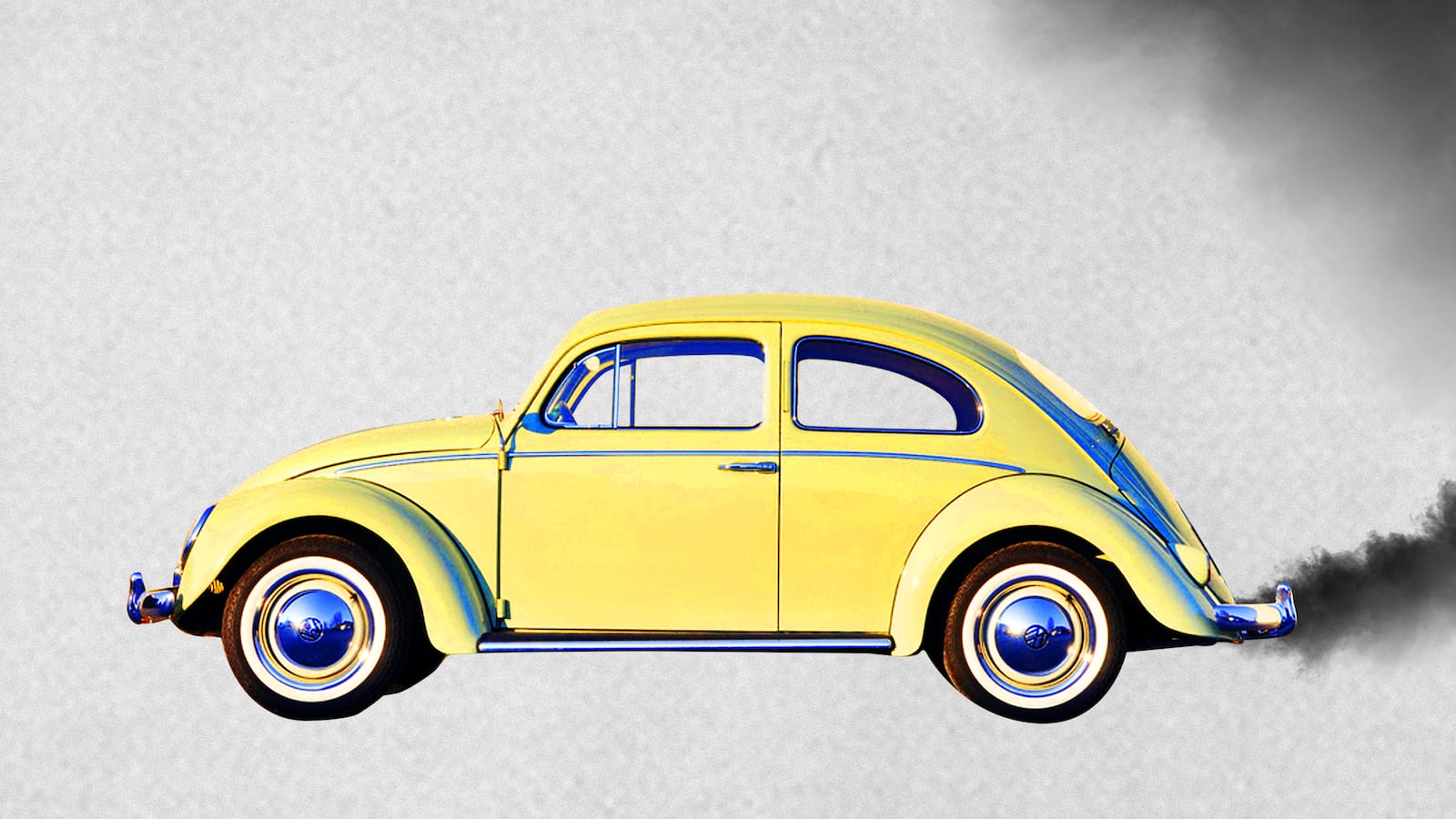Volkswagen’s admission that it cheated on U.S. emissions testing has become the latest bombshell scandal to rock the auto industry, wiping $20 billion from VW’s market capitalization and costing CEO Martin Winterkorn his job.
VW’s blatant law breaking should absolutely be punished, but the more you understand how weak emissions-testing regimes are—and the ruthlessness with which entire industry games them—the more clear it becomes that the line between VW’s “cheating” and the industry’s standard operating procedures is blurry.
For starters, the Environmental Protection Agency did not even catch Volkswagen cheating. Rather, a pro-diesel group discovered that VW diesels emit many times more nitrogen oxides (NOx) on the road than they do in EPA tests. Only after the EPA was told did it threaten VW with the immediate de-certification of all its 2016 diesel vehicles and under this extraordinary pressure the automaker admitted to cheating.
What still isn’t clear is why only Volkswagen was subjected to this pressure from EPA, when the International Council on Clean Transit (ICCT) tests show (PDF) that in real-world driving the vast majority of diesel vehicles fail to meet a European emission standard that is less stringent than the EPA’s. Rather than fingering any one scofflaw—let alone VW—the ICCT found that the average diesel emitted seven times more NOx than the standard allowed and that the few outliers were those who actually did fully comply.
The worst offenders in ICCT’s European (PDF) study were not even VW-branded vehicles. Audi (made by Volkswagen Group), Hyundai, Renault, Opel (made by General Motors), and Volvo vehicles emitted more NOx than the other 27 vehicles in the test combined. Though not proof of active cheating, the huge gap between these automakers’ vehicles and their official test results indicates that the regulators will need to look beyond Volkswagen to solve this problem. Germany’s transport ministry has now said it will do precisely that as it gears up to tackle an embarrassment that gestated under its nose but exploded into the public eye in the U.S.
Emissions regulators shouldn’t be surprised that gaps between test and real-world results are a widespread problem: after all, it lets the auto industry test itself. The agency only comes in after the fact to validate the results of just 10-15 percent of all models. Moreover, the test cycle itself is performed on a dynamometer (or “rolling road”) in a lab environment, offering ample opportunity to tweak results. VW has admitted to a relatively simple yet extreme exploitation of this system: When the vehicle’s engine control unit senses that it is putting power down but not all the wheels are turning, the car switches to a “test mode.”
In VW diesels that “test mode” was compliant with U.S. standards, but once the car switched to normal operation it would emit as much as 40 times more NOx than allowed. Without real-world testing or forensic software engineers on staff capable of combing through huge amounts of code to look for such exploits, the only way the EPA was able to discover this trick was by forcing VW to admit that it had truly cheated.
With diesels from nearly every other automaker also failing to meet standards in real-world driving, there’s a chance that others are pulling the same trick as VW. Or, they could be using any a huge arsenal of tactics that the EPA either can’t detect or don’t consider full-on cheating. One such ploy involves making favorable calculations for aerodynamic efficiency and tire-rolling resistance, two factors that aren’t measured on dyno tests and must be factored in at the automaker’s discretion. Mercedes restated its EPA rating on several models last year after admitting to doing just that, yet it was not fined or branded a cheater. Hyundai-Kia did pay a $300 million fine last year, after it admitted that it had tweaked tires and temperature conditions and “cherry picked data” in its fuel economy tests. It too was spared the public wrath VW now faces.
Even when automakers don’t bend the rules, the gap between EPA measurements and real-world results is inescapable. The most law-abiding automakers still engineer their vehicles to perform ideally under test conditions, which typically creates trade-offs with real-world driving. Transmissions and turbochargers are tuned for the test, causing power and downshifts to arrive slower; this improves efficiency at the specific speeds, throttle openings, and acceleration patterns found on the test, but in the real world these delays tend to make drivers accelerate even more aggressively, dramatically lowering observed efficiency. The better an automaker is at engineering to the test, the bigger the gap between rated and real-world efficiency—even when rules aren’t even being bent.
As long as EPA tests are performed by automakers themselves, on dynamometers in lab environments and without real-world comparisons or ECU code analysis, a gap between rated and real-world efficiency—and therefore emissions—is inevitable. The tests themselves create the gap, and the EPA’s low validation rate and weak investigative capabilities encourage everything from subtle rule-bending to outright cheating. The Volkswagen scandal is an important wake-up call to the weaknesses inherent to the system, but it hardly puts the German automaker in a unique moral category.
Every automaker games emissions testing, and there are almost certainly some who have bent the rules as far as VW has. Public outrage or even enormous fines won’t be enough to break the troubled relationship between automakers and emissions regulators. Only a full overhaul of the testing process itself can close the gap between rated and real-world efficiency, and thus end the open invitation to cheating.




